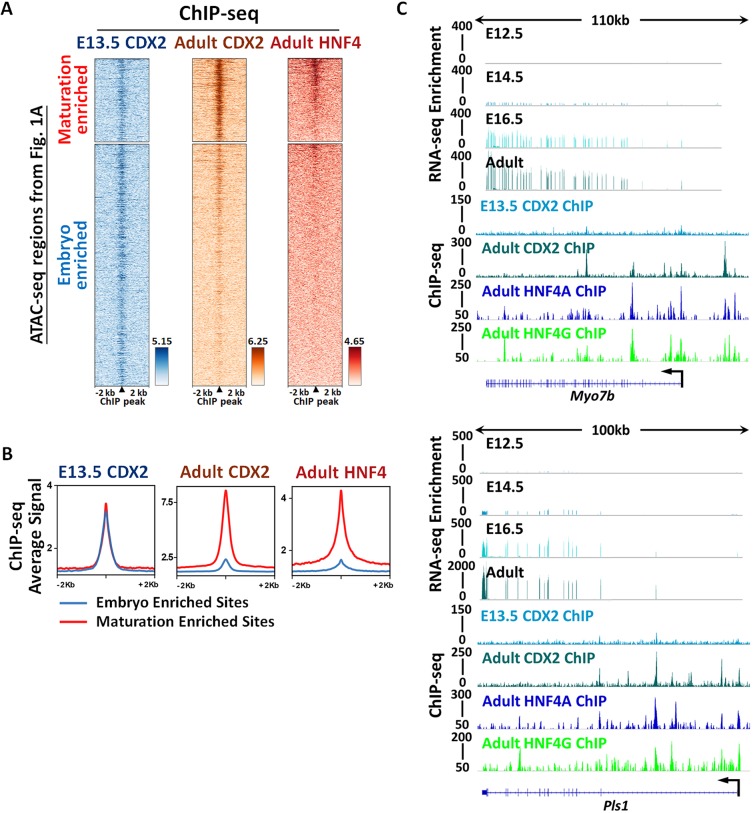Fig. 3.
Chromatin regions that become accessible in the fetal tissue are bound by CDX2 and HNF4. Genes near these regions are activated at fetal stages. (A,B) ChIP-seq profiles show that CDX2 (GSE115314, n=2 biological replicates; whole small intestine epithelium) binds to both maturation-enriched (cluster 2 in Fig. 1A) and embryo-enriched (cluster 3 in Fig. 1A) regions of intestinal accessible enhancer chromatin in E13.5 embryos. When tissues become mature, CDX2 (GSE34568 and GSE115314, n=2 biological replicates) and HNF4 (GSE112946, n=2 biological replicates per HNF4A and HNF4G ChIP; adult duodenum epithelium) bind more robustly to the maturation-enriched regions rather than to the embryo-enriched regions. The peaks of CDX2 ChIP in the heatmaps are aligned to the binding events of HNF4 ChIP. (C) Examples of genes located at maturation-enriched regions are visualized using IGV. Brush border genes, such as Myo7b and Pls1, are expressed when maturation occurs at E16.5 and are robustly expressed when intestines become mature in the adult (RNA-seq panels, GSE115541, n=2 biological replicates). These genes are directly bound by CDX2 (GSE34568 and GSE115314, n=2 biological replicates) and HNF4 (GSE112946, n=2 biological replicates per HNF4A and HNF4G ChIP).

